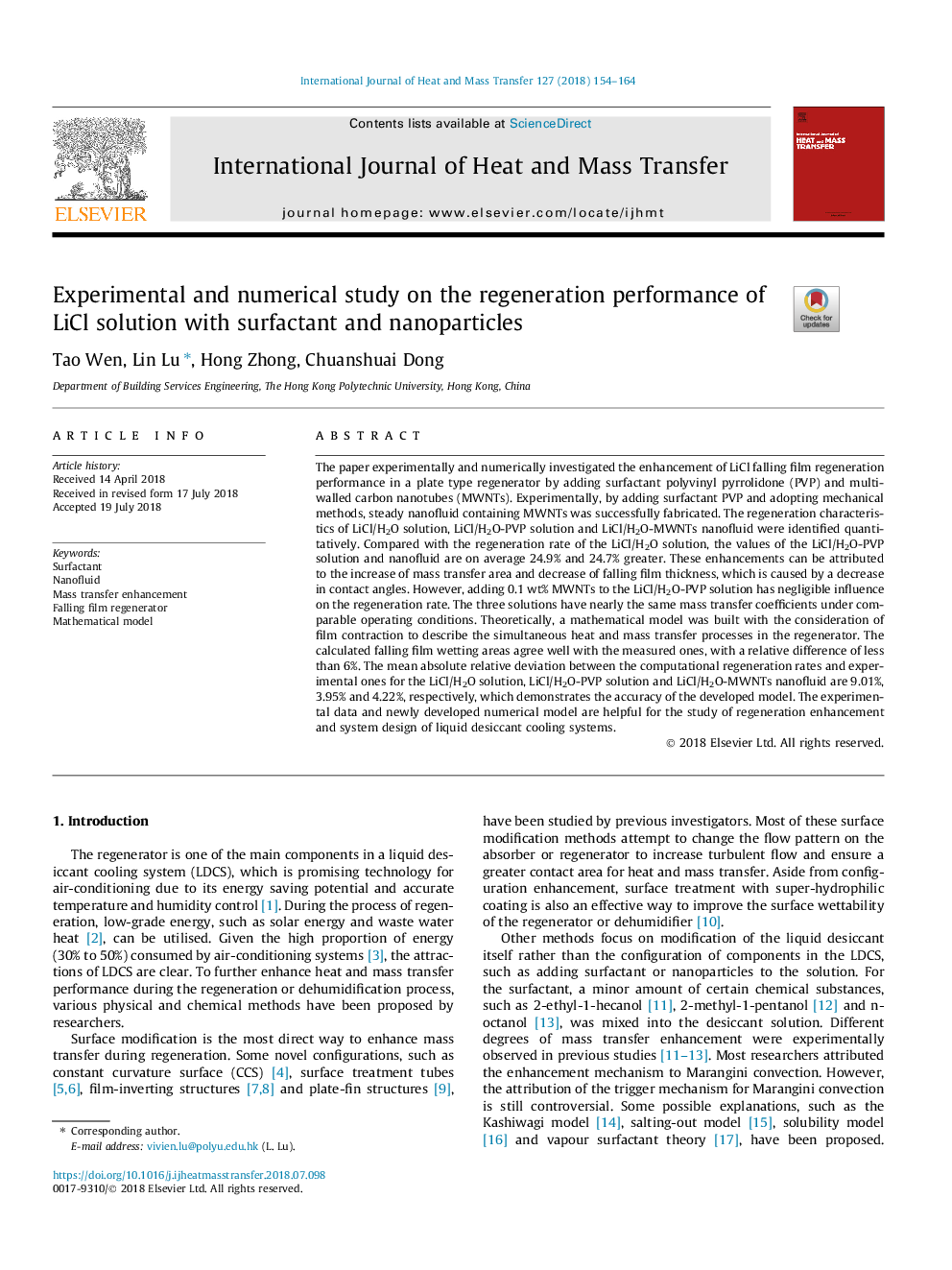| Article ID | Journal | Published Year | Pages | File Type |
|---|---|---|---|---|
| 7053660 | International Journal of Heat and Mass Transfer | 2018 | 11 Pages |
Abstract
The paper experimentally and numerically investigated the enhancement of LiCl falling film regeneration performance in a plate type regenerator by adding surfactant polyvinyl pyrrolidone (PVP) and multi-walled carbon nanotubes (MWNTs). Experimentally, by adding surfactant PVP and adopting mechanical methods, steady nanofluid containing MWNTs was successfully fabricated. The regeneration characteristics of LiCl/H2O solution, LiCl/H2O-PVP solution and LiCl/H2O-MWNTs nanofluid were identified quantitatively. Compared with the regeneration rate of the LiCl/H2O solution, the values of the LiCl/H2O-PVP solution and nanofluid are on average 24.9% and 24.7% greater. These enhancements can be attributed to the increase of mass transfer area and decrease of falling film thickness, which is caused by a decrease in contact angles. However, adding 0.1â¯wt% MWNTs to the LiCl/H2O-PVP solution has negligible influence on the regeneration rate. The three solutions have nearly the same mass transfer coefficients under comparable operating conditions. Theoretically, a mathematical model was built with the consideration of film contraction to describe the simultaneous heat and mass transfer processes in the regenerator. The calculated falling film wetting areas agree well with the measured ones, with a relative difference of less than 6%. The mean absolute relative deviation between the computational regeneration rates and experimental ones for the LiCl/H2O solution, LiCl/H2O-PVP solution and LiCl/H2O-MWNTs nanofluid are 9.01%, 3.95% and 4.22%, respectively, which demonstrates the accuracy of the developed model. The experimental data and newly developed numerical model are helpful for the study of regeneration enhancement and system design of liquid desiccant cooling systems.
Related Topics
Physical Sciences and Engineering
Chemical Engineering
Fluid Flow and Transfer Processes
Authors
Tao Wen, Lin Lu, Hong Zhong, Chuanshuai Dong,
